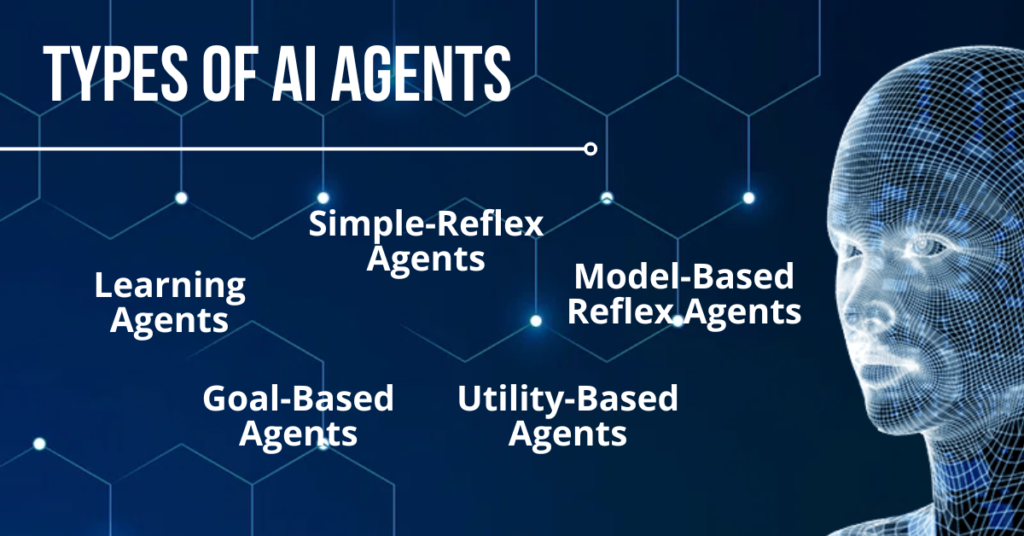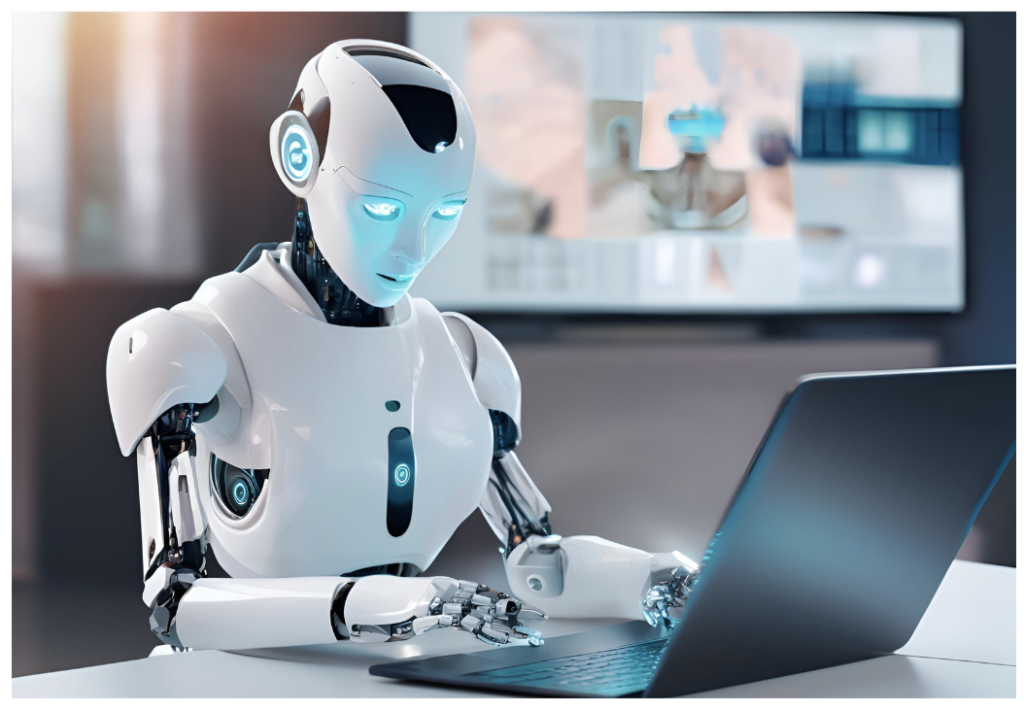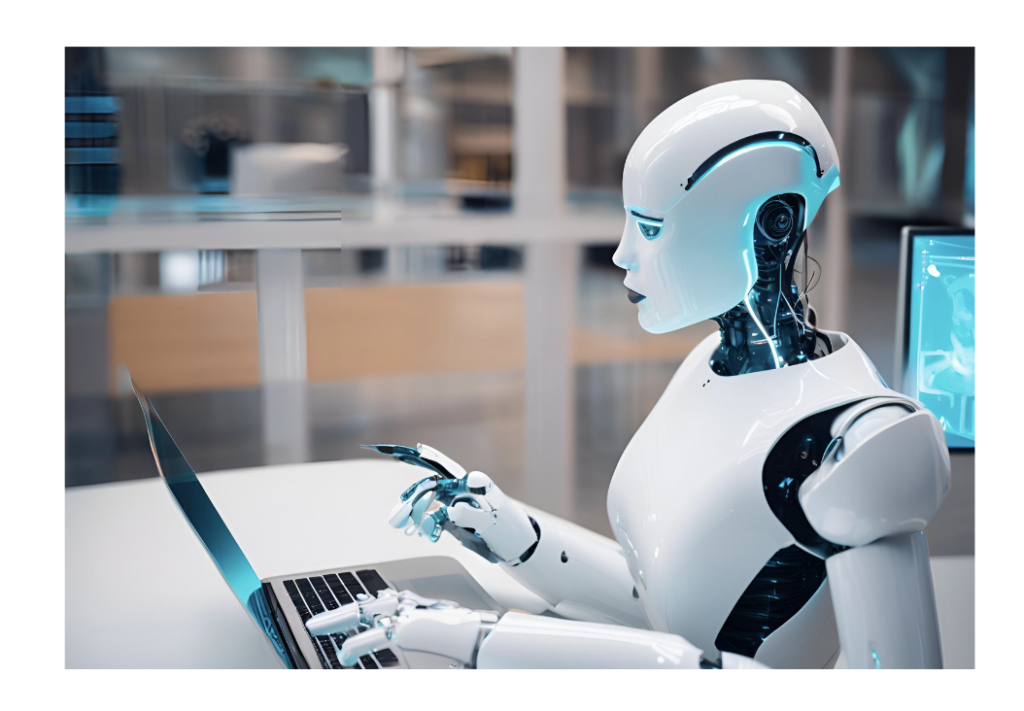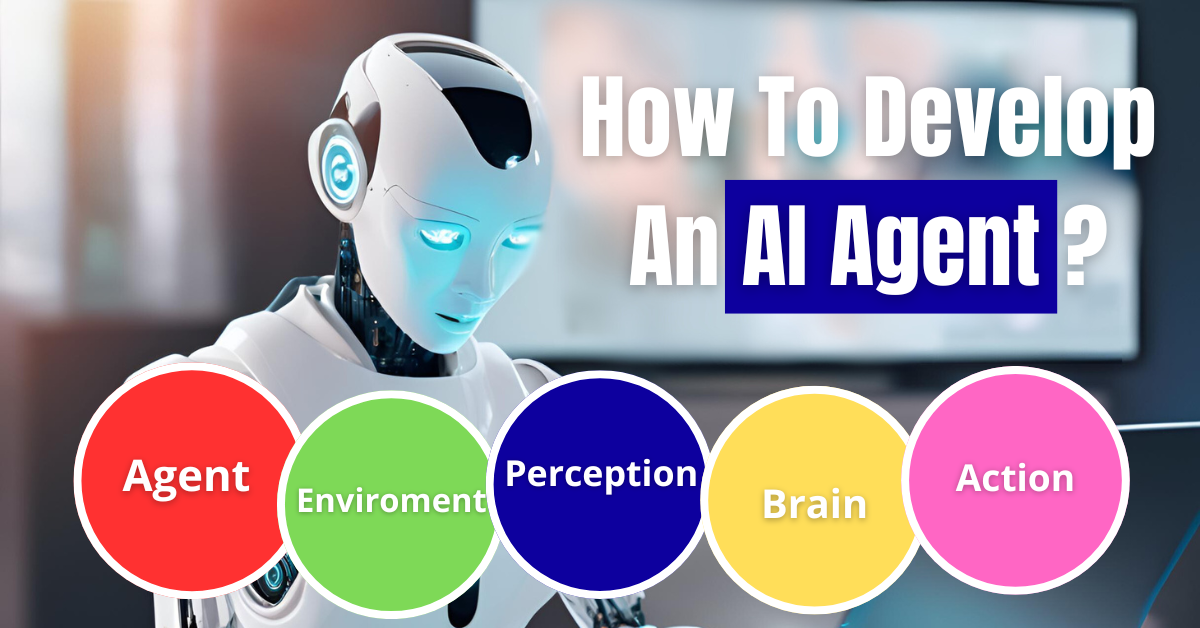This is the best to know How To Develop An AI Agent and get ahead in the AI run. This is great if you’re looking to jump into AI but don’t know where to start.
In 2024, AI conversation took a leap with ChatGPT‘s arrival, setting new trends. This article will guide you through how to develop an AI agent from scratch, even if you’re a beginner.
Get ready—your journey on how to develop an AI agent starts here.
Table of Contents
Key Takeaways
- Start by deciding what job your AI agent will do and set clear, achievable goals.
- Pick the right tools and languages like Python or TensorFlow to build your AI system.
- Prepare and organize your data since good quality data is key for a successful AI.
- Make an AI model by creating algorithms, then test and improve it through training.
- Integrate your AI agent with existing systems and plan how it can grow in the future.
Define your AI Task and Objectives To Get in a Great Start Point
First, clarify the specific job the AI agent will do. Next, set clear goals for what you want the AI agent to achieve.
Specify the AI agent task
To make an AI agent, start by saying clearly what you want it to do. Imagine Jordan’s custom AI assistant—its job is to help with sales tasks and suggest actions. Your AI might work on chatting with customers or spotting fake news.
It’s important to know the exact task from the start.
A goal without a plan is just a wish.
Choose goals that are both clear and reachable. If your agent’s aim is to improve customer service, decide how much faster or more helpful it needs to be. Use tools like TensorFlow for creating brain-like networks or PyTorch for making learning models that can change as they get new information.
This way, your agent learns over time exactly how you need it to act, whether answering questions quickly or providing personalized recommendations similar to the Gemini models in Google Cloud Workspace do for employees.
Set clear goals
Goals are your map in building an AI system. Start by saying exactly what you want your AI agent to do. Maybe it should sort emails or recommend movies. Knowing this shapes everything from choosing programming languages like Python to picking machine learning models.
Each goal needs a clear target, such as “reduce email sorting time by 50%” or “increase movie recommendation accuracy by 30%.” This way, you know when your AI is on the right track.
Next, break big goals into smaller steps. If your aim is to create a chatbot, identify milestones like understanding user questions and giving correct answers. Use examples: if someone asks about the weather, your bot should know they need a forecast.
Select tools that help reach these mini-goals smoothly—like TensorFlow for building neural networks or cloud services for storing data sets securely. By keeping goals specific and measurable, progress isn’t just possible—it’s visible and rewarding every step of the way.

Select the Appropriate Technologies
When selecting the right technologies for your AI agent, consider coding languages and frameworks like Python, Java, or TensorFlow. Look into AI tools such as IBM Watson or Google Cloud to support your project’s needs.
Choose programming languages and frameworks
Picking the right programming language and framework is a big deal to know how to develop an AI agent. It shapes how your AI agent will work and grow. Here’s what you need to know:
- Python stands out for AI projects. It’s popular because it has lots of libraries like TensorFlow and PyTorch. These help with machine learning, deep learning, and natural language processing.
- JavaScript could be your go-to for interactive web-based AI applications. With frameworks like Brain.js, it’s easier to integrate AI into websites.
- Java brings benefits too, especially in large-scale projects. Its ability to scale and perform well makes it a solid choice for complex AI systems.
- For those into Microsoft technologies, C# can’t be ignored. It works well with Microsoft’s ML.NET framework, making it great for developing Windows-based AI applications.
- Don’t overlook R if you’re focusing on data analysis or statistical computing in your AI project.
Frameworks play a huge role too:
- TensorFlow shines for its flexibility and wide adoption in deep learning tasks.
- PyTorch is known for being developer-friendly and excellent for prototypes thanks to its simplicity.
- Scikit-learn offers great tools for data mining and analysis, perfect when working with structured data.
Each choice comes with its own set of libraries that simplify tasks like image recognition or text analysis — essential parts of many AI projects. If you’re building chatbots, virtual assistants or any other intelligent system, starting with the right foundation makes everything else smoother.
Discover AI tools and platforms
To discover AI tools and platforms to learn how to develop an AI agent, consider these essential steps:
- Research widely used programming languages and frameworks such as Python, TensorFlow, or PyTorch for building AI models effectively.
- Explore AI tools like Google Cloud AI, Microsoft Azure AI, or IBM Watson for their capabilities in developing and deploying intelligent systems.
- Investigate API integration for seamless connectivity with different systems and services to enhance the functionality of the AI agent.
- Consider GPT-3.5 and other large language models from OpenAI for advanced natural language processing applications.
- Look into platforms like AutoGen Studio, Vertex AI Agent Builder, Zapier, Amazon’s Bedrock, and Google’s Duet AI to streamline prototyping and development of multi-agent solutions.

Prepare the Data
Preparing the data for your AI agent is a crucial step. Collect the right kind of data and ensure it’s processed effectively to drive successful outcomes. Keep in mind that quality data leads to accurate results and paves the way for a robust AI system.
Collect necessary data
Collecting the right data is crucial for developing your AI agent. Here’s how to go about it:
- Identify the specific types of data needed for your AI agent’s task and objectives.
- Gather relevant information from reliable sources such as databases, user interactions, or IoT devices.
- Ensure the collected data is diverse, comprehensive, and represents real-world scenarios.
- Organize and clean the data to remove any inconsistencies or errors that could affect your AI model’s performance.
- Verify that the data complies with any legal or ethical considerations, especially regarding privacy and security.
Remember to document each step carefully to ensure the quality and integrity of your dataset.
Process data for effectiveness
To process data for effectiveness, follow these steps:
- Clean the data by removing any errors or inconsistencies.
- Organize the data into relevant categories for easy analysis.
- Analyze the data to identify patterns and insights that can inform decision-making.
- Use visualization tools to present the data in a clear and understandable manner.
- Implement quality control measures to ensure the accuracy and reliability of the processed data.
Remember to periodically review and update your data processing methods to stay current and effective in achieving your AI agent’s objectives.
Construct the AI Model
Now you’re ready to build your AI model using algorithms and creating the first prototype. After this step, you’ll move on to training your AI agent.
Develop algorithms
To develop algorithms, you need to create step-by-step instructions for the AI system. Start by defining what you want the algorithm to accomplish. Then, use programming languages and tools for modeling and simulating tasks like detecting objects or making decisions.
Make sure to gather the right data before creating your algorithms; it helps in improving their effectiveness and accuracy. Once developed, test these algorithms using various scenarios to ensure they work as intended.
Remember, refining these algorithms is an ongoing process as you train your system using machine learning techniques.
Now let’s explore how training methods can fine-tune your AI agent for better performance.

Implement the first prototype
After developing algorithms, it’s time to implement the first prototype of your AI system. This involves putting together a basic version of your AI agent using the selected technologies and data prepared earlier.
You will use this prototype to test and refine the performance of your AI model before further training or refining.
During this phase, you will write code to bring your algorithms to life and create a working model that can carry out its specified task. It’s an essential step towards building a functional AI system that aligns with the objectives set at the beginning of this project.
Keep in mind that as you progress through this stage, any feedback received from initial testing should be used to improve and adjust your prototype for better functionality and accuracy before moving forward.
Train the AI Agent
Developing your AI agent through rigorous training is a critical step. Train it using various methods and continuously adjust the parameters to achieve the best results. Then, refine its performance based on actual trials.
Apply training methods
To train your AI agent effectively, you need to follow specific AI learning methods and techniques. Here’s a detailed list:
- Use reinforcement learning to teach the AI agent through trial and error.
- Employ supervised learning to provide labeled examples for the AI agent to learn from.
- Utilize unsupervised learning to allow the AI agent to find patterns and relationships in unlabeled data.
- Adjust parameters based on performance feedback to refine the AI agent’s training.
- Implement beta testing to evaluate the AI agent’s performance in real-world scenarios.
Remember these methods when training your AI agent – it will help you create an effective and capable system that achieves its objectives swiftly and efficiently.
Adjust and refine parameters
To adjust and refine parameters, follow these steps:
- Identify the key parameters that affect the AI agent’s performance.
- Carefully analyze the impact of each parameter on the agent’s behavior and efficiency.
- Modify one parameter at a time to observe its effects on the agent’s task execution.
- Use statistical analysis to measure how parameter adjustments influence the agent’s overall performance.
- Document the changes made to each parameter and their outcomes in detail.
- Collaborate with domain experts to validate if the refined parameters align with domain-specific requirements.
- Continuously monitor the AI agent’s behavior after each parameter adjustment for further refinement.
Remember, adjusting and refining parameters is an iterative process crucial for enhancing an AI agent’s capabilities and effectiveness.

Evaluate and Refine the AI Agent
Assess your AI agent’s performance using different tools like model evaluation and performance metrics. Then, make improvements based on the trial results to refine the AI agent.
Assess using performance indicators
To evaluate and refine the performance of your AI agent, you will need to use certain performance indicators. These indicators are crucial for continuously learning and improving the effectiveness of your AI agent. Here’s how you can assess using performance indicators:
- Measure the accuracy of your AI agent in completing tasks, such as response time and error rate.
- Evaluate user satisfaction through feedback and surveys to ensure the AI agent is meeting the needs of its users.
- Analyze the efficiency of the AI agent by tracking resource utilization and cost-effectiveness.
- Monitor the adaptability of the AI model to changes in data and environment to ensure its robustness.
- Assess the impact of the AI agent on overall productivity, identifying areas of improvement and optimization.
- Track key performance metrics related to specific tasks or objectives set for the AI agent.
By evaluating these performance indicators, you can continuously improve your AI agent’s capabilities and ensure it effectively meets its objectives.
Make improvements based on trials
To make improvements based on trials, follow these steps:
- Analyze the performance data gathered during the trials to identify areas for improvement.
- Adjust the AI agent’s parameters and algorithms based on the insights from the trial results.
- Test the modified AI agent in a controlled environment to determine its enhanced performance.
- Gather feedback from users and stakeholders to understand their experiences and suggestions for further improvements.
- Refine the AI agent based on user feedback and trial outcomes, iterating on the development process.
This iterative approach ensures that the AI agent continually improves and adapts to real-world challenges, enhancing its overall effectiveness.
Implement the AI Agent
Now, it’s time to put your AI agent into action. Integrate it with existing systems and plan for its expansion to maximize its potential.

Integrate with current systems
Integrate with your current systems by using OpenAI’s GPT models and tools like Zapier, Amazon’s Bedrock, and Google’s Duet AI. You can also take inspiration from Autogen-based tour agent systems to create your own project.
By integrating these technologies, you can make sure that the AI agent system fits smoothly into your existing setup while enhancing its capabilities. This step is crucial to ensure a seamless transition and efficient performance of the AI agent in your environment.
Remember to consider how well these tools mesh with what you already have so that the integration doesn’t cause any disruptions or complexities within your systems.
Plan for expansion
When expanding your AI system, consider scalability and readiness for growth. Ensure that the technology and infrastructure can accommodate increased demand. Anticipate future needs by implementing a modular design and scalable architecture.
Collaborate with partners to leverage their expertise in AI technologies, such as machine learning algorithms, generative AI, and natural language processing (NLP). Explore potential expansion into new areas like robotics automation systems or real-time predictive analytics to stay ahead of market demands.
Ensure compliance with cybersecurity measures during expansion to protect customer data. Seek innovative strategies for customer experience personalization using AI techniques while maintaining usability and user-friendly interfaces.
Embrace OpenAI’s artificial general intelligence methodologies and aim for modularity in your approach towards software development enabling swift deployment even amidst complexities.
Conclusion – How To Develop An AI Agent?
Congratulations! You now know how to develop an AI agent system from scratch.
Now, get to work and practice!
To develop an AI agent, start by defining clear goals and choosing the right technologies like Python, TensorFlow, or PyTorch. Gather and clean your data, then build and train your AI model using machine learning techniques. Finally, deploy and integrate the AI agent with existing systems. This process can revolutionize businesses by enhancing customer experiences, automating tasks, forecasting demand, and personalizing marketing.
Good luck and I hope this helps you to learn how to develop an AI agent!

FAQs – How To Develop An AI Agent?
1. What’s the first step in developing an AI agent system from scratch?
The initial step involves understanding artificial intelligence (AI) and its frameworks, then deciding on which type of agents you want to develop – simple reflex agents, model-based reflex agents or goal-based agents.
2. How can I use AI for process automation?
You can use robotic process automation (RPA), a form of AI that automates business processes such as supply chain logistics and demand forecasting. This technology works by analyzing data from suppliers and customer experiences to personalize marketing strategies.
3. Can you give me a tutorial on how to train my AI models?
Sure! Training models involve feeding your AI with data for analysis; this could be through APIs or LLMS depending on your project implementation needs. A step-by-step guide with code examples will help simplify the complexity involved.
4. Is collaboration necessary when building an AI agent system?
Absolutely! Teamwork fosters creativity and innovation in any field, including AI research. Asynchronous communication allows team members to work together effectively despite different schedules or locations.
5. What role does computer vision play in developing an AI agent system?
Computer vision is crucial especially if you’re working on projects like self-driving cars or chatbot development… It helps your system analyze visual input accurately…
6. Any tips for debugging during the development process?
Debugging is inevitable… So always pay attention to queries thrown by your library… Third-party cookies might also come handy sometimes… Lastly, don’t forget human-AI interaction plays a vital role too!





